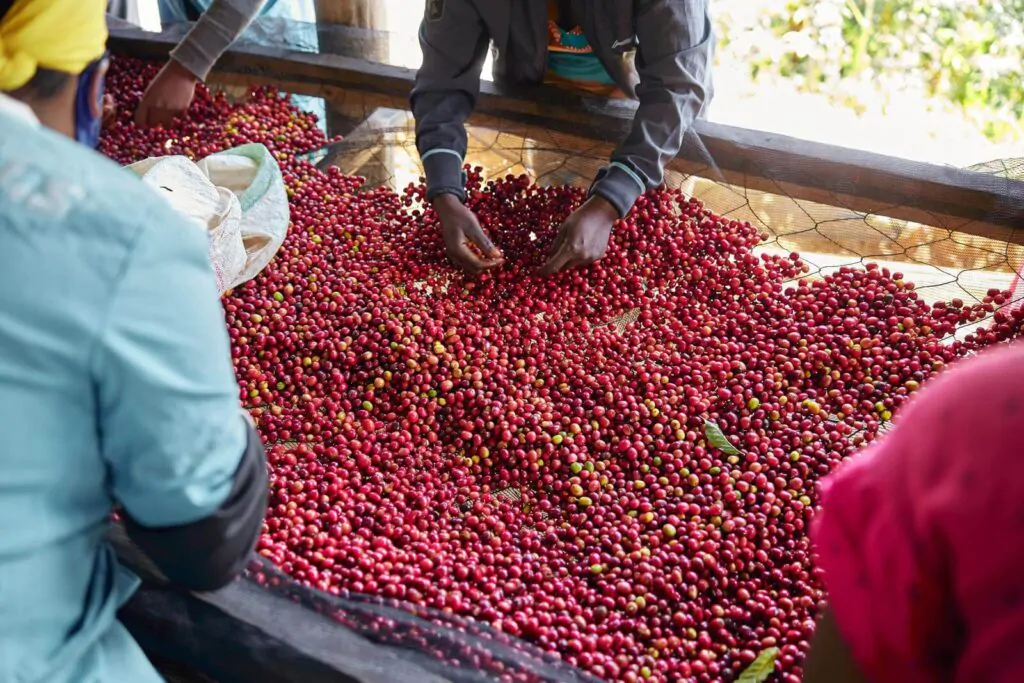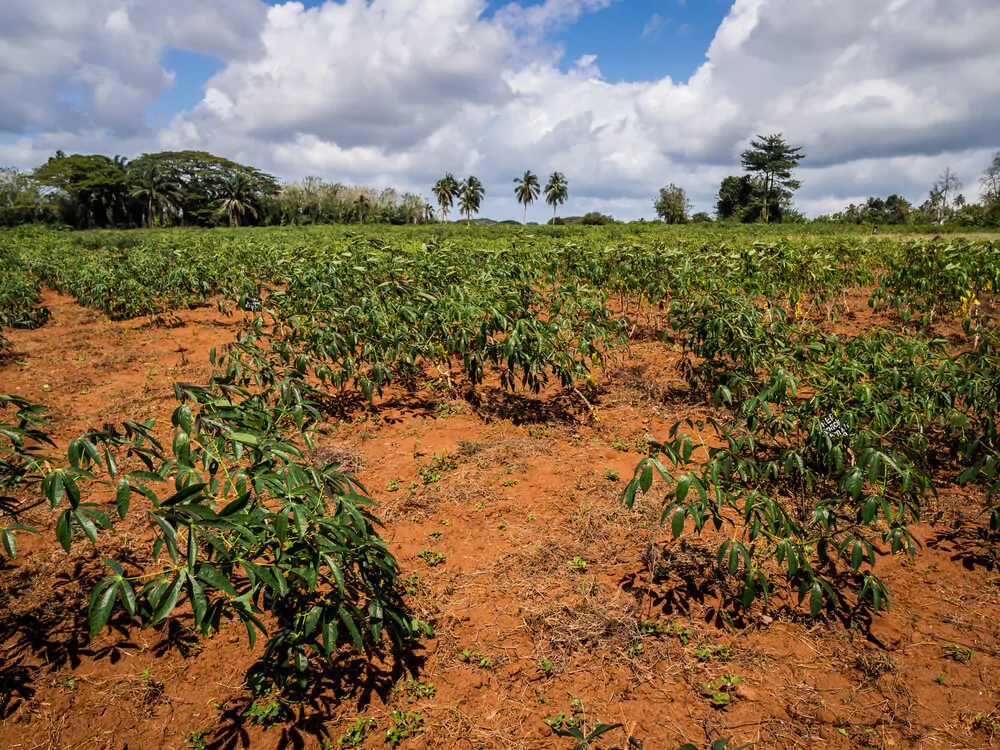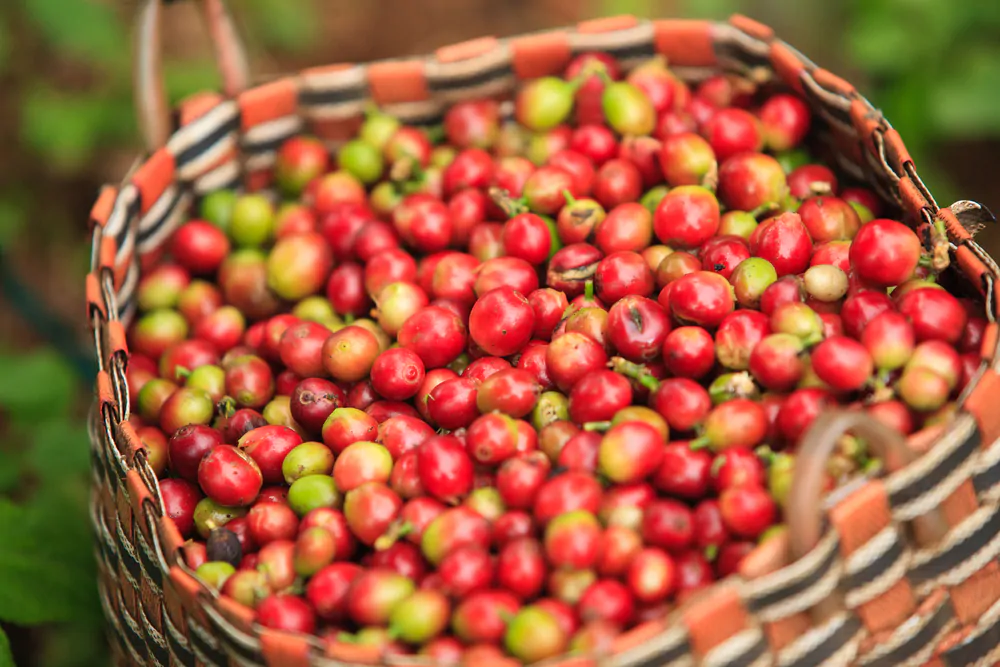Are you a coffee connoisseur who has always wondered how coffee beans are harvested? Here are some reasons why hand-picking is better for harvesting coffee beans.

Hand-picking, also known as manual coffee picking, is a coffee harvesting method that requires laborers to pick the coffee beans by hand. Producing delightful coffee requires expertise throughout the production and supply chain process.
That is why many coffee companies still prefer hand-picking even though machines are widely used for harvesting coffee beans. The way they harvest the coffee beans will greatly impact the quality and cost of production of their coffee products.
With that in mind, here are the top 10 reasons why hand-picking is better for harvesting coffee beans. You might also be interested in our washed coffee vs. natural coffee guide.
- 1. It Produces High-Quality Coffee Products
- 2. It Provides Much Better Control Over The Color, Shape, And Size Of The Raw Beans
- 3. It Is More Cost-Effective
- 4. It Can Be Easy To Monitor Plant Health And Coffee Bean Quality
- 5. It Can Be Done On All Types Of Terrain
- 6. It Ensures Maximized Productivity
- 7. It Does Not Damage Coffee Beans
- 8. It Is More Environmentally Friendly
- 9. It Produces Higher-Priced Coffee Beans
- 10. It Selects Coffee Beans More Precisely At The Optimal Maturity Stage
1. It Produces High-Quality Coffee Products

In the hand-picking method, laborers carefully select the ripest coffee fruit, leaving the unripe coffee on the tree for future harvesting. The process could take a while, but this will give the sugars more time to develop, making the cup of coffee sweeter with more nuanced flavors. That is why hand-picking produces a higher quality coffee product than mechanical harvesters.
When it comes to efficiency, though, mechanical harvesters make the work easier and faster as they use machines that will completely strip the branch of its coffee cherries. However, by doing so, unripe and over-ripe coffee cherries get mixed in with the ripe ones, producing only commodity-grade coffee products.
You may also be interested in reading our guide on the overview of coffee bean classification and grading.
2. It Provides Much Better Control Over The Color, Shape, And Size Of The Raw Beans
Hand-picking provides much better control over the color, shape, and size of the raw beans because it only involves using human hands. Teams of workers, usually the wives of the men who work on the fields, sort the beans and then remove anything unsatisfactory in terms of color, shape, and size.
The appearance and flavor of roasted coffee are influenced by its size and shape. The best coffee beans are almost identical in size and shape. So, when different sizes and shapes of coffee beans are roasted together, the result will be uneven since larger beans roast differently than smaller ones.
The majority of high-quality coffee products also go through rigorous color sorting, which is done by hand. They separate the best coffee beans from the discolored and defective ones. After that, the best coffee beans may be hand-cleaned twice or even thrice.
3. It Is More Cost-Effective
Unlike mechanical methods, the hand-picking method does not require large machines or equipment that are usually too expensive. Not all coffee producers can afford these machines for coffee harvesting — and it is also not that practical for them to invest in something unnecessary.
The hand-picking method results in fewer costs for sorting because of the consistency of the harvested coffee beans. It also results in a higher yield of coffee beans as only a few harvested coffee beans need to be discarded.
Furthermore, the hand-picking method will ensure maximum productivity and quality.
4. It Can Be Easy To Monitor Plant Health And Coffee Bean Quality
Laborers usually spend a whole day picking ripe coffee cherries. This way, coffee farmers can inspect the coffee tree for early signs of fungi, disease, and pests and evaluate the health of the leaves and branches.
Handpicking is also a great way to get rid of pests, especially if just a few plants are affected.

5. It Can Be Done On All Types Of Terrain
Coffee is typically grown on slopes ranging in elevation from 600 to 1,800 meters. Slopes are ideal for coffee because they are well-drained and also cooler. Water stagnation harms coffee plants, so hills are ideal.
Typically, the higher the elevation, the lower the average temperatures are. As a result, coffee grown at higher altitudes tends to grow more slowly and develop more nuanced flavor profiles. Coffee beans grown at high altitudes will also have more complex flavors, better acidity, and more sweetness.
For this reason, although machines are very time efficient, they are only suitable for farms whose terrain is flat. When coffee is picked by hand, the trees can be planted on steep slopes, which results in more efficient use of farmland.
You may also be interested in reading our guide on how is coffee grown.
6. It Ensures Maximized Productivity
If you are a small-scale business in the coffee industry, you want to produce as much as you can to increase your profit, so hand-picking is the best method for you. The hand-picking method is one way to ensure that every batch of coffee beans will produce the flavor you want with no wastage.
The specialty coffee industry prefers the hand-picking method. Selective harvesting is the best option if you are aiming for higher quality and the specialty market. Small farmers or even big coffee companies tend to look at the overall impact on their business and what coffee harvesting method is best suited for their goals and objectives.
7. It Does Not Damage Coffee Beans
Harvesters carefully select and handle coffee beans throughout the hand-picking process, which minimizes crop damage. If coffee farmers do not use mechanical harvesters correctly, it can cause significant damage to both fruits and plants. Because it involves vibration, it can affect and reduce the yield of the coffee tree, resulting in commodity-grade coffee beans.
Therefore, harvesting by hand is much gentler on the coffee tree, particularly when picking coffee cherries. The hand-picking method allows the harvester to pick only the healthy coffee cherries, discarding any rotten ones or leaving the underripe ones for future harvesting.
8. It Is More Environmentally Friendly

Environmentally friendly farming methods simply refer to farming methods that do not harm the environment. However, this does not imply that these methods reject modern technology — rather, they employ organic and only non-harmful protocols, just like in hand-picking procedures.
You also can avoid using potentially harmful chemicals by hand-picking pests like fleas, locusts, and ticks from the coffee plants.
9. It Produces Higher-Priced Coffee Beans
Since only the fully ripe coffee cherries are picked in the hand-picking method, the chance of harvesting unripe or defective ones is minimal. So, unlike mechanical harvesting, hand-picking coffee cherries will produce higher-quality coffee, which can be sold at a higher price.
Mechanical harvesters work by shaking the trees, causing the coffee cherries to fall from the trees, whether they are ripe or not. This process can be highly efficient in terms of speed and quantity, but it produces lower quality coffee. This can be sorted later or simply be sold as a lower-quality crop at a lower price.
That is why many large coffee companies prefer hand-picked coffee cherries gently roasted in small batches to produce premium coffees.
10. It Selects Coffee Beans More Precisely At The Optimal Maturity Stage
Coffee farmers or workers in the hand-picking method inspect and pick only the ripe fruits from the tree, using only their bare hands. This process is repeated to maximize coffee production by picking as many ripe coffee cherries as possible. So, although it takes quite some time, harvesting all the ripe coffee cherries in the coffee tree is worthwhile.
The harvest period should be done as early as possible to avoid the overripening of the coffee cherries. This is one advantage of the hand-picking method since the harvester can evaluate each coffee tree for maturity and quality.
You may also be interested in reading our guide on can coffee be harvested by machine.
